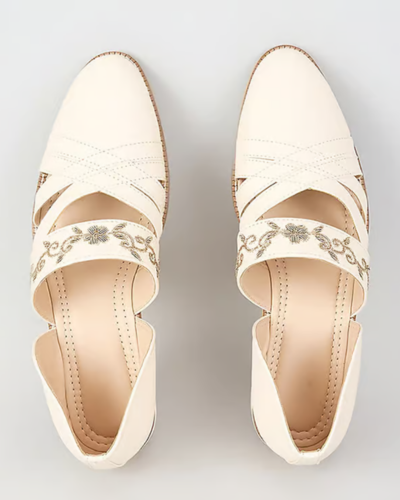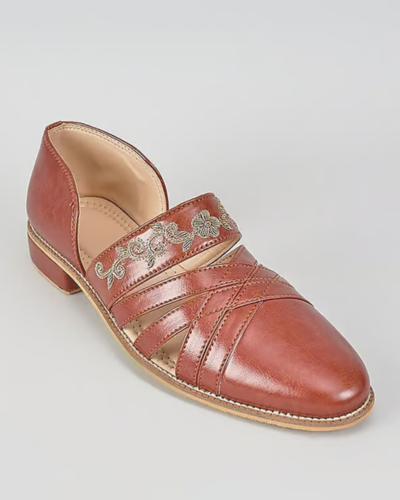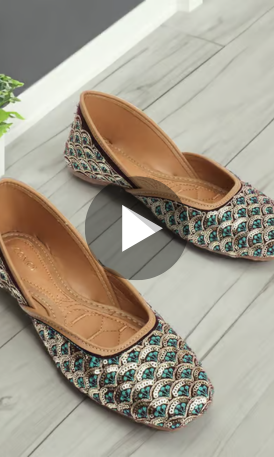In desi dressing, the real charm lies in the details. Nothing quite completes a festive look like a pair of intricately designed juttis or mojaris. Style insiders are phasing out stilettos and donning traditional shapes with a twist this fashion season. Ethnic shoes have become a key element in fashion, whether you’re putting together a wedding trousseau or selecting items for the much-anticipated Diwali collection.
Rajput Revival: Why Juttis Are Making A Luxe Comeback

Juttis are beautifully crafted with materials like velvet, encrusted with antique gold zardozi, delicate dabka embroidery and tiny hand-set pearls. The pointed toe curves upward ever so slightly, a nod to royal Mughal silhouettes, while the cushioned insole hints at modern comfort.
Formerly the domain of the dusty bazaar and the family trunk, juttis have become the designer runway’s darlings. The shape is centuries old, while the styling isn’t.
Style takeaway: Elaborate embroidery in zari, pearl thread, or mirror work elevates juttis to statement pieces. They’re a piece of heritage with a contemporary touch.
Mojaris with Couture Flair

The mojaris have a curved tip and are desi and unique. From the erstwhile choice of Mughal royalty, mojaris today ground any high-voltage ethnic look. Mojaris are stunning under shararas or dhoti pants in a delightful clash of structure and tradition.
Ethnic Shoes with Contemporary Fits
Modern fashionistas are breaking all conventional barriers, teaming juttis with denim, kurtas with white sneakers, and mojaris with oversized blazers. Think of pastel pink juttis made from soft leather with the delicate touch of rose quartz stones, soft sequins, and fine-thread embroidery in blush and champagne tones. The rounded toe is edged with scalloped piping, and a hint of shimmer in the fabric gives it that dreamy glow under sunlight.
East meets West is truly the key fashion vibe. Ethnic shoes are grounded in cultural pride and audacious in style. One of the greatest flexes of ethnic footwear is a style that doesn’t destroy your soles. Juttis and mojaris give you this heavenly combo of beauty and comfort.
Look for cushioned soles, wide-fit styles, and breathable fabrics that let you dance through the baraat or brunch. Happy feet seek juttis with double padding and soft leather lining.
Embroidery Extravaganza: Where Craft Meets Couture
What distinguishes a simple jutti from a fashion trophy? The embroidery. Hand-beaded zardozi, sulta with gota patti and phulkari stitches tell a story. Every jutti is a piece of art and life.
No wonder international fashion houses collaborate with artisans from Rajasthan and Punjab to create exquisite footwear art. Look for emerald, ruby, and royal blue jewel tones that pop with velvet or silk bases.
The Final Step: Tradition Meets Traction
Juttis and mojaris aren’t just a style choice but a cultural statement. It’s about walking the walk with the grace of your heritage and the sass of couture. With ethnic shoes, keep those who chase trends on their toes.
Sometimes, it is not a heel that screams ‘style’; sometimes, the objective statement is the history underfoot.



